14+2 Best Places to Visit in Istanbul


With a population of 15 million, Istanbul is a big place with big mosques, big hills, and a big sea strait cutting it right down the middle. And the marvelous Topkapi Palace, which alone deserves an entire guide!
Part European, part Asian, it’s a good idea to read up on our Istanbul travel tips before you go so things don’t get a little too exciting if you know what I mean (like if you wanted to try a shoe shiner or, god forbid, decided to rent a car and drive).
Before you book a hotel in Istanbul, make sure to read our article on where to stay in Istanbul, because choosing a hotel in the wrong neighborhood could cost you precious travel time (it really is a big place!).
We’ve also got another article for you about the best things to eat in Istanbul, because you’re sure to work up an appetite. You can visit all the things on this list on a very busy weekend, but 3 or 4 days would be better for a more relaxing stay in Istanbul.
Istanbul is one of maybe 10 cities in the world that I think are deserving of a 3-day stay. Most others can be done in 1 or 2 days.
Speaking of relaxing, one of the top things that we did in Istanbul was visiting a hammam (Turkish bath). A word of advice? Go to the best one you can afford, it’s such a luxurious experience that you won’t regret it or forget it. And it’s tons more enjoyable and more Turkish than the retched Grand Bazaar.
You might also be interested in reading:
- 3 Days in Istanbul Itinerary
- What Happens in a Hamam in Istanbul: Our Experience
- The 4 Best Areas to Stay in Istanbul
- What to Eat in Istanbul: Our 13 Top Tips
- 29 Istanbul Travel Tips: From Haggling at the Bazaars to Tourist Scams
- How to Visit Istanbul’s Topkapi Palace Guide: 20 Top Questions Answered
Here are the best places to visit in Istanbul, based on my personal experience:
1. Topkapi Palace: The absolute highlight of Istanbul
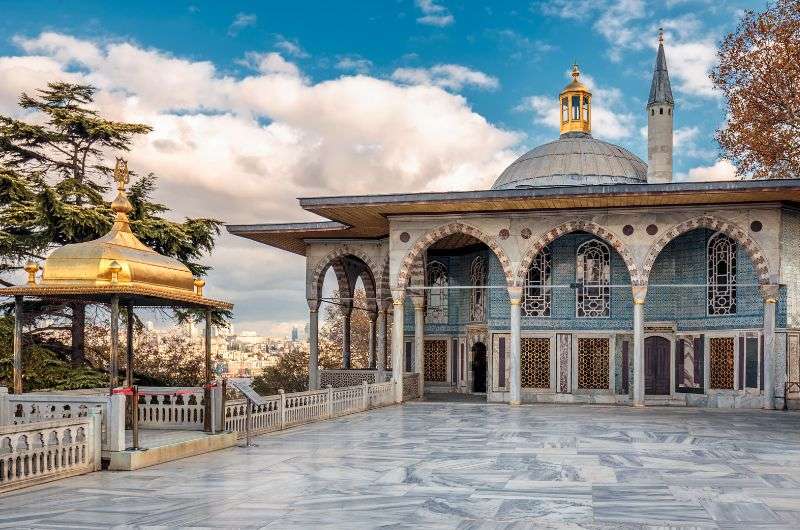
You can’t visit every room in the palace, but it still took us 5 hours to walk through it all!
It’s been a while since I’ve written all about Andalusia and its fantastic Moorish palaces (like the ginormous Alhambra in Granada or, my personal favorite, the spectacular Alcazar in Sevilla), but one step into Topkapi Palace and boom! The memories and tiles are back!
Topkapi Palace is now a museum, but it used to be the stomping grounds of Ottoman sultans from the 1460s until the 19th century, though it gradually lost its cool factor when new palaces (like the Dolmabahçe Palace, see item 14 on this list) started being built along the Bosphorus and the sultans preferred to hang out in them instead. In 1856, they moved out altogether to Dolmabahçe Palace.
Now, you too can walk around and shake your head/marvel at the opulence in which they lived. Holy moly!
The general layout of the palace consists of a series of pavilions built around 4 large courtyards. In the 1st courtyard, don’t miss the chance to see possibly the oldest unrenovated building you’ve ever laid eyes on—the Haghia Irene from the 4th century. It’s a pre-Ottoman era church that is one of very few in the city that wasn’t converted into a mosque. They used to store weapons in it instead.
We thoroughly enjoyed the Palace Kitchens, which also house an amazing Chinese porcelain exhibit. The Outer Treasury was of more interest to me since this is where the arms and armor collection is displayed.
In its prime, the Topkapi Palace housed up to 4,000 people, so there are, in fact, a lot of rooms, though many aren’t open to the public. Still, it took us 5 hours to go through Topkapi Palace, so you’ll want to allow yourself enough time to not feel rushed!
For more details, check out my full Topkapi Palace guide, where I describe how you can visit it, what to see, and answer all your FAQs.
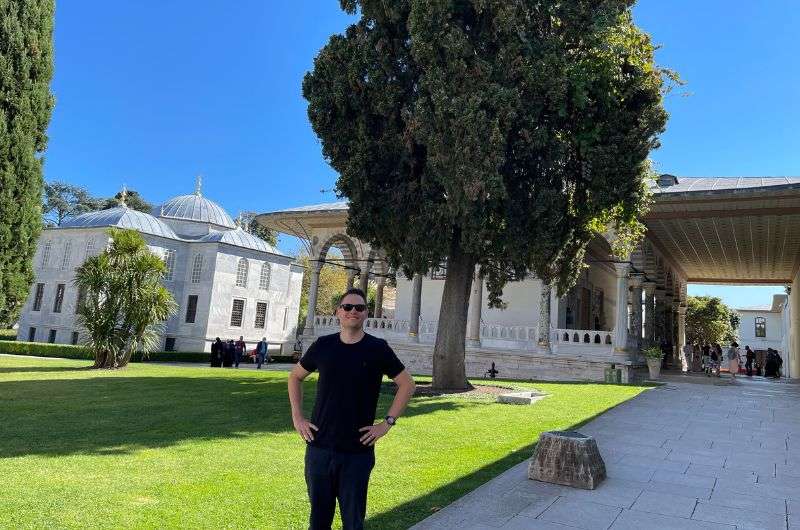
Topkapi Palace Harem
The Harem is all everyone ever talks about and I think it’s because of the misconception of the purpose of it. It wasn’t some wild sex room, ok?
The harem was in fact the sultan’s family quarters, the area that was restricted to everyone else that wasn’t part of the Ottoman dynasty, namely any man that wasn’t related… meaning the Queen Mother, the sultan’s wives and their children, the concubines and their eunuch (castrated) guards were the only ones besides the sultan that could enter the Harem.
Concubines were women who were accepted to the Topkapi Harem, schooled in Islam, culture, reading, writing, and skills such as music, dancing, and embroidery. They then became a sort of assistant to the existing concubines, then to the family members. Only the prettiest and most talented of the bunch moved up the ranks all the way to the sultan. Who then took them to the wild sex room. Dozens of them. But hey, give the guy a break, he was only allowed 4 official wives.
Topkapi Palace tickets
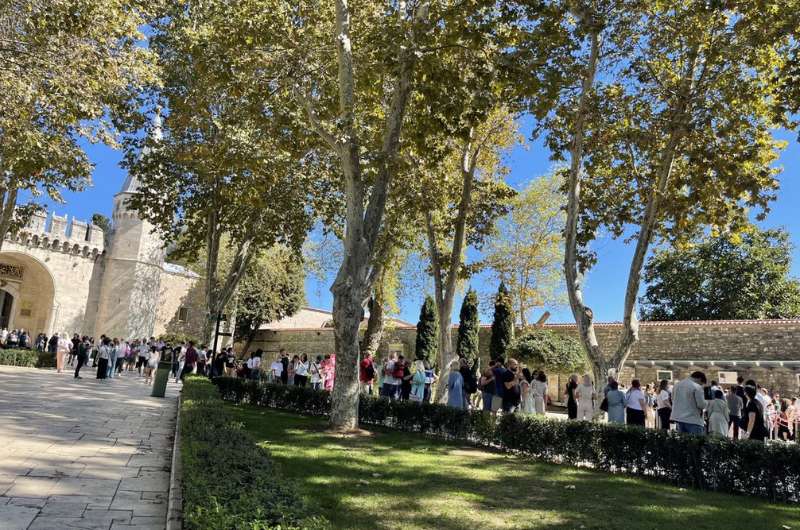
Tickets to the Topkapi Palace can be bought as a combination with just the Haghia Irene for 320 TL (USD 18) or can also include the Harem for 420 TL (USD 23). These tickets cannot be bought online (well, sort of... read on).
An hour is the standard waiting time to get tickets at Topkapi Palace. You can, however, get the Istanbul Museum Pass for TL 2.500 (USD 82) that includes this and other Istanbul museums, and skip the line that way.
Another way to fly by the lines is to pay for a guided tour online, but it will cost you double the amount as a regular ticket. But hey, time is money, right?
If you go in entirely on your own, don’t forget your audio guide!
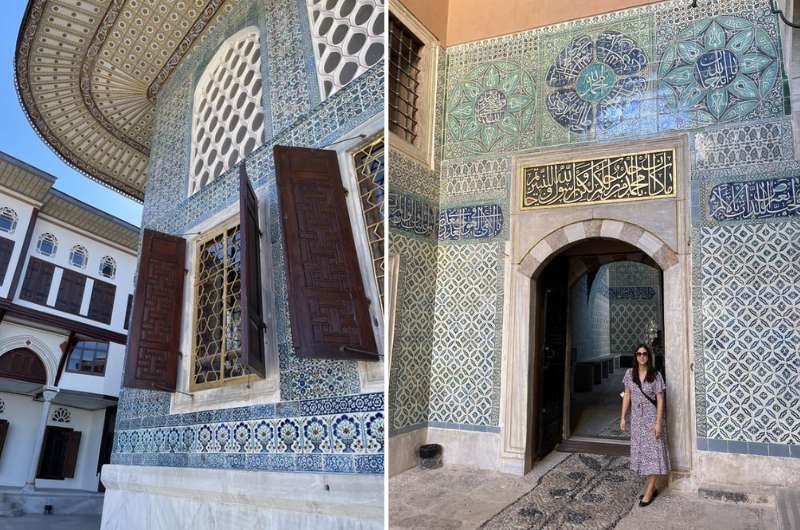
When Karin stood next to some particularly small tiles at the Topkapi Harem, her dress pretty much blended into the design of the walls. It was like she was a floating head.
- Topkapi Palace, Cankurtaran Mh., 34122 Fatih
- Open daily except for Tuesdays 9 am–6 pm from April to end of October, otherwise it closes at 4:45 pm (and is still closed Tuesdays)
- Tickets: Topkapi Palace+Haghia Irene is 320 TL (USD 18), Topkapi Palace+Haghia Irene+Harem is 420 TL (USD 18). Consider a guided tour or the Istanbul Museum Pass if you want to skip the line.
My top tips for visiting Istanbul:
- Consider getting the Istanbul Museum Pass. It’s not the best value if you don’t visit all the museums, but it allows you to skip the crazy long lines at Istanbul’s top attractions.
- Wear comfortable shoes! Istanbul is hilly and you will be doing a lot of walking.
- You need at least 2 full days for Istanbul, but 3 is better, and 4 is comfortable.
- Ladies! Carry a scarf at all times, you will be covering your hair at the mosques.
- Gentlemen! Wear pants. If you wear shorts that don’t cover your knees, you will get a skirt at the mosques.
2. Suleymaniye Mosque (Suleiman Mosque): huge with a touch of red
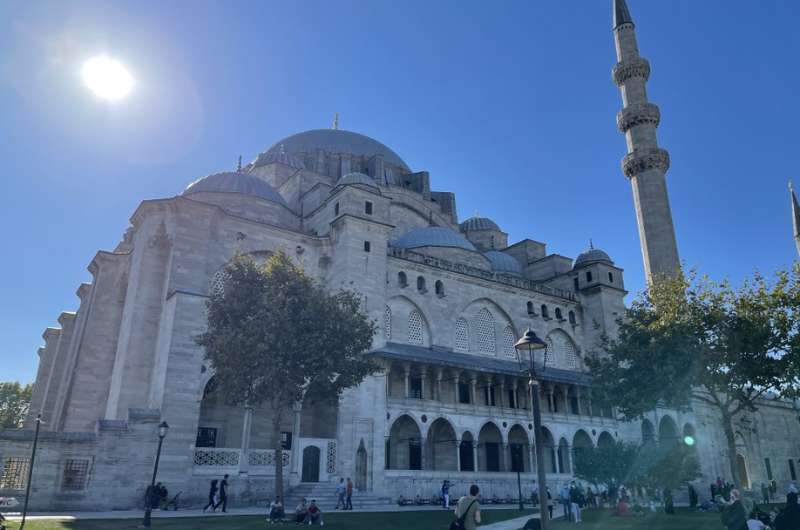
The thing is massive!
Suleymaniye Mosque is considered the most important mosque in Istanbul and is one of the hugest mosques I’ve ever seen. And even though it isn’t the biggest one in town, it’s probably the most impressive. I mean it’s certainly sturdy—it has survived many earthquakes, apparently thanks to the water in the foundation construction.
It’s also my personal favorite mosque (not that I’m ranking mosques or anything).
A little bit of Suleymaniye Mosque background information
The mosque was built on the site of the first palace of the Ottomans in the city when they moved to the then-new Topkapi Palace.
But it wasn’t just a mosque—there was a kitchen that fed the poor, a school, a hospital, a sort of hostel, and a hamam.
It was Suleiman the Magnificent (how cool is his name?!) that ordered the Suleymaniye Mosque to be built, and it was none other than the top Ottoman architect, Mimar Sinan (a converted Christian), that built it. The mosque has four minarets, which was the traditional number for a mosque that “belonged” to a sultan. If a mosque had two minarets, it was constructed by a prince or princess. Regular mosques have only one minaret.
Both the architect Sinan and Suleiman the Magnificent are buried on site.
Since the mosque sits on top of one of Istanbul’s hills, the views from it are really nice. You can see the Bosphorus Strait and a large part of the city.
Suleymaniye Mosque visitor information and dress code
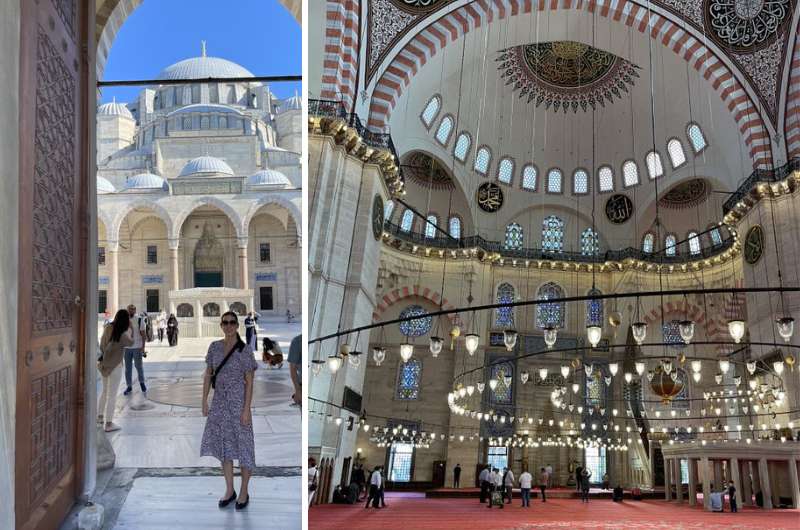
Karin covering all the right spots (head scarf coming soon), and the interior of the Suleymaniye Mosque staring the color red
Suleiman (Suleymaniye) Mosque is open every day from 9 am to 5 or 6 pm, but tourists cannot go inside at times of prayer (those are, in total, 5 times a day, with the one around noon causing the most disruption for tourists). The mosque is also cleaned in preparation for each prayer, which takes about an hour, so closing times can be long. The prayer on Friday at noon is special and visits on Friday morning are not allowed, so only go in after noon of you visit Suleymaniye Mosque on Friday.
Like all mosques, you can visit the Suleiman Mosque for free, though donations are encouraged.
Everyone needs to keep their knees and shoulders (more like upper-arms) covered, and ladies have to wear a head scarf. Men wear long pants almost exclusively, so don’t try to pull your shorts down just enough for them to end under your knees. Just be a grown-up and put some pants on.
For woman, covered legs does not mean leggings or any other tight garment, if you wear pants make them loose. But don’t sweat it, you can borrow a wrap-around skirt thingy at the entrance if your clothes are offensive. You can also borrow a head scarf, but who really wants to share scarves? Just bring your own.
You will take your shoes off and leave them outside (or grab a plastic bag and carry them in with you). You can wear socks, or not, when going inside.
Tip: The Suleiman Mosque is in the Eminönü part of the Fatih district, unlike most other attractions that are in Sultanahmet. Check out our guide to the best area to stay in in Istanbul so you don’t end up in a hotel far away from everything you want to see! The Orientbank Hotel Istanbul, Autograph Collection is close to the Suleiman Mosque and one of the hotels that we recommend in the article.
- Suleymaniye Mosque, Süleymaniye, Prof. Sıddık Sami Onar Cd. No:1, Fatih
- Open daily 9 am–6 pm (closed at prayer times and 1 hour before due to cleaning), on Friday visits only possible after noon prayer
- Free entry
3. Hagia Sophia: the one that can’t decide what it is
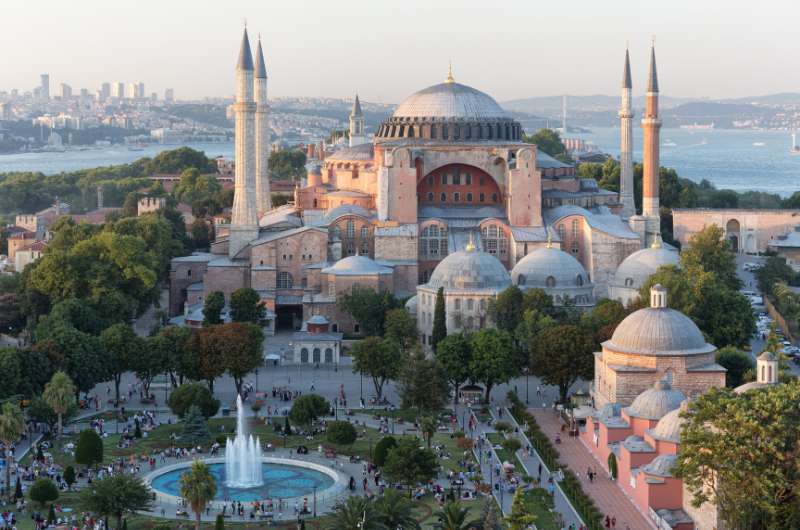
Hagia Sophia, the mosque… I mean museum… I mean mosque
Hagia Sophia knocked our socks off. But wait…
Is Hagia Sophia a mosque or a museum?
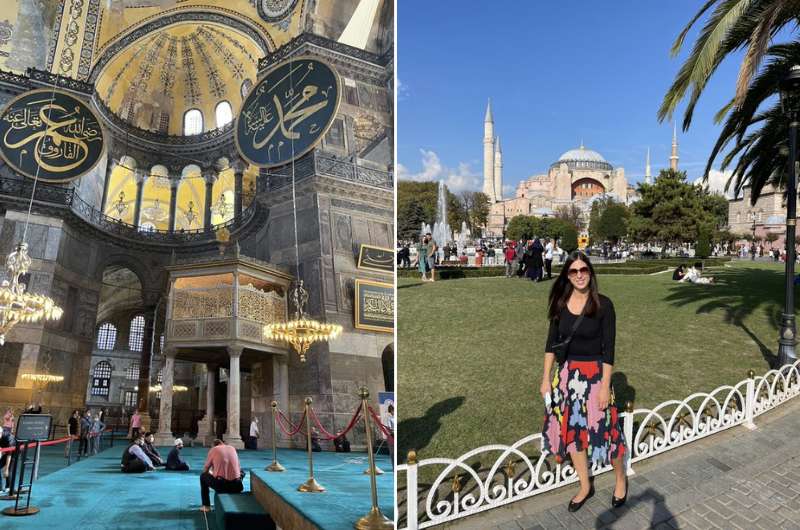
The Hagia Sophia Grand Mosque, inside and out, and one Karin (just from the outside)
Hagia Sophia is a Christian basilica turned mosque (turned museum and then, from 2020, a mosque again). The original structure was built in the 4th century, knocked down by an earthquake and then rebuilt in the 6th century, making it old as heck!
After the Fall of Constantinople to the Ottoman Empire in 1453 it was converted into a mosque and some much cleverer architects added features to it that prevented it from ever being damaged by an earthquake ever again.
Not only that, it’s big… so big, in fact, that until year 1506, it held the title of largest church in the world. Then Sevilla’s cathedral came along, turned from a mosque into a church and bam! They stole the title away from Hagia Sophia. Oh the irony.
Each new sultan wanted to make Hagia Sophia even more beautiful than it was before, resulting in it housing a wealth of Turkish art, calligraphy and tiling. In 1934, after being closed for restoration for 4 years, Hagia Sophia was turned into a museum.
All that changed once again in 2020 when Hagia Sophia returned to its (almost) original purpose. It is once again a mosque.
Tips for visiting Hagia Sophia
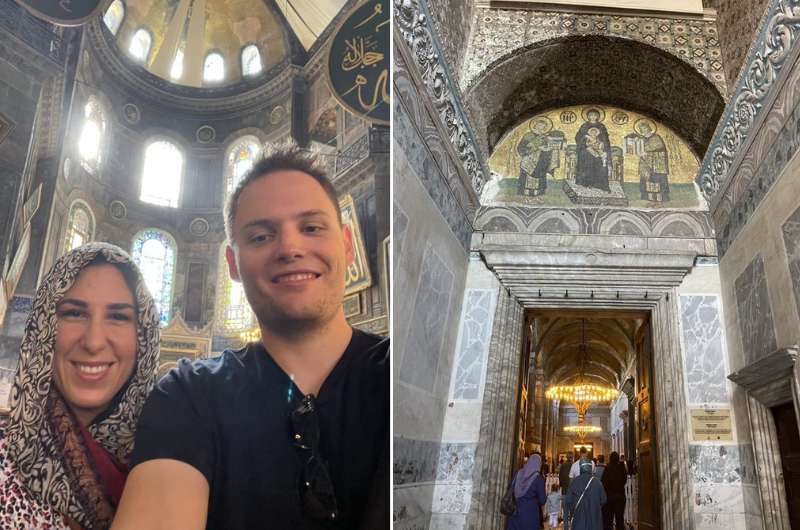
A mosque with catholic depictions? Sure, why not
The interior of Hagia Sophia is enormous and amazing and gorgeous. It’s incredible to see the mix of cultural influences inside and to imagine how the space has evolved during the different centuries.
Don’t get lost and wander into the Blue Mosque instead, they are right across from each other. Hagia Sophia is the pinker one that looks less intimidating.
Update for 2024: Free entry for praying Muslims only, EUR 25 for the rest of us. Foreign non-Muslims are now only allowed on the balcony on the 2nd floor, never onto the main floor. But at least it doesn't close even at prayer times.

The standard dress code applies, i.e. no shoulders, no legs, no female hair, and no shoes. Scarves and wraps can be borrowed free of charge at the entrance.
- Hagia Sophia, Sultan Ahmet, Ayasofya Meydanı No:1, Fatih
- Open daily 9 am–7:30 pm (last entry), closed on Fridays between 12:30 pm–2:30 pm
- EUR 25 for tourists
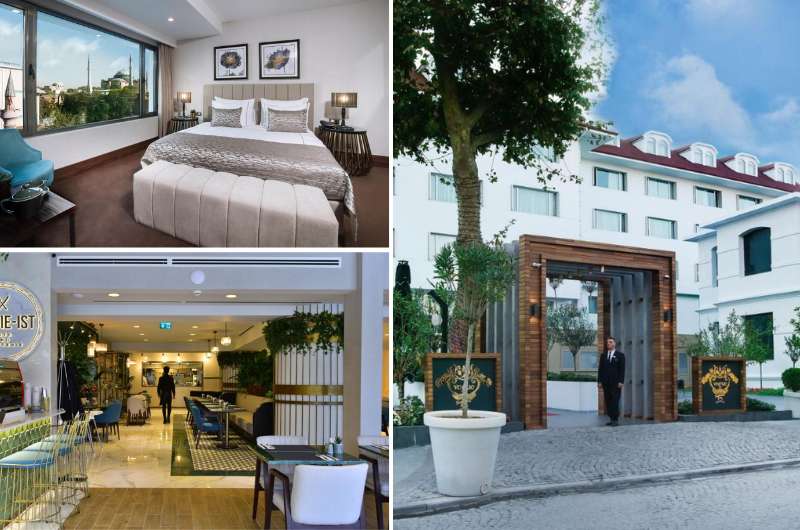
Sophisticated and close to Hagia Sophia @ Vogue Hotel Supreme
Hotel tip: Read our guide to the best parts of Istanbul to stay in for hotel recommendations.
For example, the 5-star Vogue Hotel Supreme is smack in the middle of it all. It’s buffered from the hustle and bustle of the streets by a spacious courtyard, so you don’t feel like you’re sleeping too close to the crowds.
There’s a restaurant with plenty of indoor and outdoor seating and a terrace that has great views of Hagia Sophia. Breakfast is terrific.
Staff is very attentive and professional. Rooms are comfortable and very clean.
4. Video mapping at the Theodosius Cistern
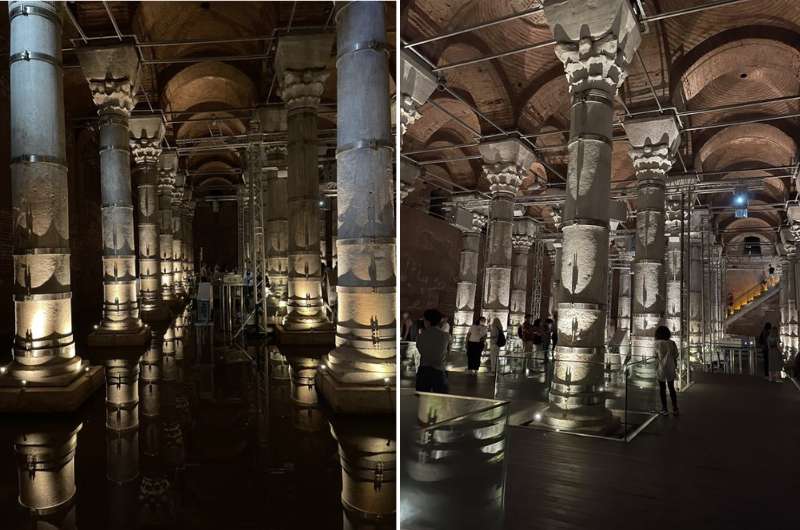
Theodisius Cistern
The largest of around 80 underground cisterns in Istanbul, Theodosius Cistern (Şerefiye Sarnıcı) was part of the largest underground water distribution system in the Roman Empire.
A quick history of Istanbul’s cisterns
When Constantinople (now Istanbul) became the capital of the Roman Empire, the population grew rapidly. And the people were thirsty! It’s ironic that in a city surrounded by water, they had trouble supplying its citizens with drinking water.
Luckily, by the 6th century, a system of tunnels, aqueducts, water storage cisterns, and over 560 km of water pipes were built, and everyone could enjoy some H2O mostly from the springs in Belgrad Forest.
The Theodosius Cistern held drinking water and was built in the 5th century. It was discovered by accident under the Eminönü Town Hall that was supposed to be demolished in 2010.
How to visit the light show at Theodosius Cistern
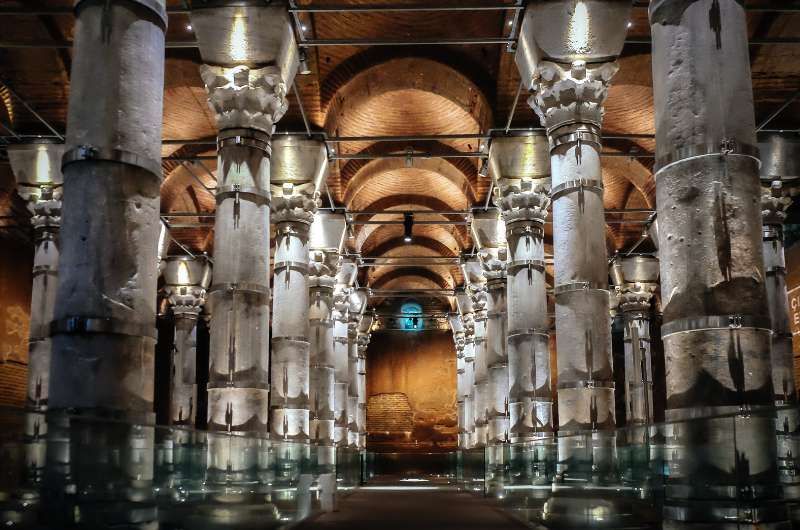
The mix of old and new at the Theodosius Cistern
There is a video mapping show at the Theodosius Cistern that we thought was really cool. I thought it would suck, but it didn’t! It was great.
The Theodosius Cistern is way less famous that the Basilica Cistern and also much smaller: just 45x25 m (145x80 ft). It is now housed in a modern steel and glass building, which provides a cool contrast to all the oldness of the cistern and is also used as an exhibition space.
It is located not far from Hagia Sophia and the Blue Mosque.
Inside, you can see 32 marble columns and the original red bricks of the walls. There aren’t any signs or information panels, so I suggest reading up on Istanbul’s cisterns beforehand to really appreciate what you will be seeing.
The video mapping show lasts about 10 minutes that is cool to experience, though a lot of people think it’s overpriced. I agree that it’s short, but if 8 bucks seems like too much to you, don’t read our article about our luxury hammam experience, also known as item 6 on this list. The price of that might ruin your whole day. (Visiting the most luxurious hammam you can is, by the way, one of the big DOs on our list of things to do in Istanbul.)
Groups are let down into the cistern every hour on the hour. Get there at least 15 minutes before the full hour so you have enough time to get your tickets.
Once you get in, you can then wander around, wait for the light show, and then either wander around again or leave at your leisure. We practiced our patience and waited the extra 10 minutes for everyone to get out and then enjoyed a moment of peace at this wonderful historical site. But just for a minute, and then it was on to more adventures!
- Theodosius Cistern, Binbirdirek, Piyer Loti Cd. No:2/1, Fatih
- Open daily 9 am–7 pm, last light show at 6 pm
- Tickets cost TL 150.
5. Museum of the History of Science and Technology in Islam
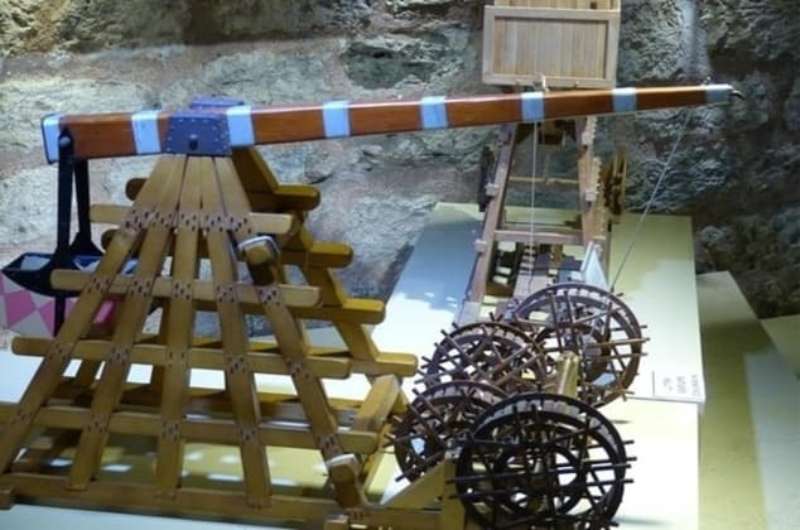
Catapult exhibit at the Museum of the History of Science and Technology in Islam
Having visited Belgium with its spectacular museums not that long ago, I had to manage my expectations in Turkey. The Belgians set the bar very high. That said, I really enjoyed this museum! It is very interesting, and some parts are even very cool!
There are 12 sections in the Museum of the History of Science and Technology in Islam, each one focused on a different area (astronomy, physics, medicine, optics, etc.) and the Muslims’ innovations in that area.
Some pieces were a bit boring, especially since the descriptions, though in English, were brief and sometimes hard to understand. But most were more intriguing, like the Elephant Clock or the pycnometer that measures gravity, and overall you do get to appreciate Islam’s contribution to science. There are even a few videos you can watch.
You’ll need about 1.5 hours in the museum.
- Museum of the History of Science and Technology in Islam, Cankurtaran, Gülhane Parkı, Taya Hatun Sk No:8A, Fatih
- Open daily 9 am–8 pm from April to October, until 6:30 pm in other months (ticket office closes 1 hour before closing time)
- Tickets cost TL 50.
6. Cağaloğlu Hammam: Basically, someone washes you
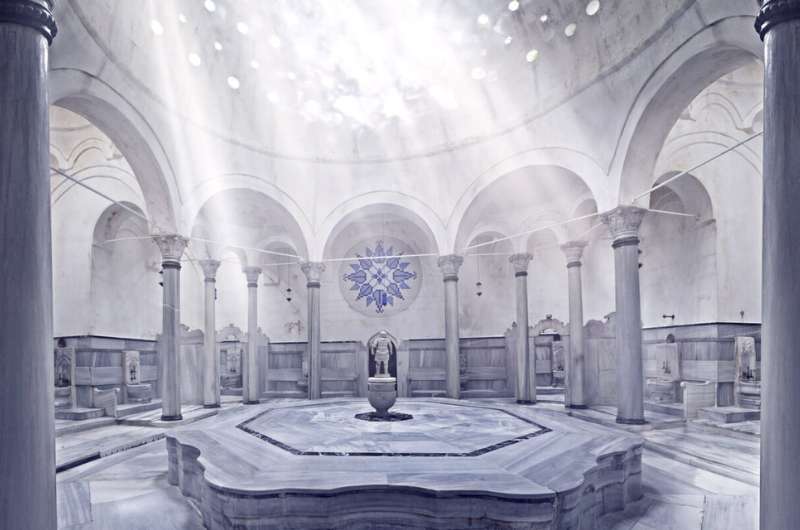
I bet your bathroom doesn’t look like this @ Cağaloğlu Hamam
Move over, spas and saunas, hammams are the way to live! An oasis of relaxation amongst the city’s craziness that makes you feel like a sultan. Why haven’t I been paying someone to wash me this whole time?!
What happens at a hammam in Istanbul?
A hammam, or Turkish bath, is a public bathing facility with steam baths, regular baths, people that scrub you, massage you, put nicely-smelling potions on you, and then give you tea and send you on your way. What to expect at a hammam?
You go through one room to the next, each one getting hotter and hotter. There is assisted scrubbing, massages, and sometimes a bubble bath involved.
Men and women go separately, and all the attendants match the gender of the visitors they tend to.
A hammam is a traditional feature of the Muslim world, and they got the idea from the Romans and their thermal baths. So public bathing is the way to go, apparently.
It’s not just a place they would get clean, but it was the social equivalent of going to a coffee shop—you chat with your neighbors, catch up on gossip, and ascertain your social status based on which hammam you could afford to go to. Like social media, but naked.
The best USD 160 spent on a bubble bath
We (by “we” I mean Karin) chose the Ottoman Luxury Service at Cağaloğlu Hamam, because only the best of the best is good enough for my darling wife. Was the USD 150 per person worth it? Absolutely.
Actually, the rebirth that is promised during the Elixir of Cağaloğlu Hamamı experience costs double what we paid, and you get not one but two private therapists, so ours was still a sensible price. Rebirth isn’t an easy task, ok, you need all hands on deck.
In summary, if you’re ever going to pay someone good money to give you a good scrub, it has to be in Istanbul. Forget all the bullshit about how great the lively bazaars and busy streets are, this is Istanbul at its finest.
Read more about what to expect in a hammam here. We have another article about the dos and don'ts of going to a hammam, because all the crap that I found online when doing research was just disgraceful and someone that has actually been to a hammam needs to set things straight.
- Cağaloğlu Hamam, Alemdar, Prof. Kazım İsmail Gürkan Cd. No:24, Fatih
- Open daily from 9am–10 pm (11 pm on weekends)
- Prices start at USD 50 for a simple experience
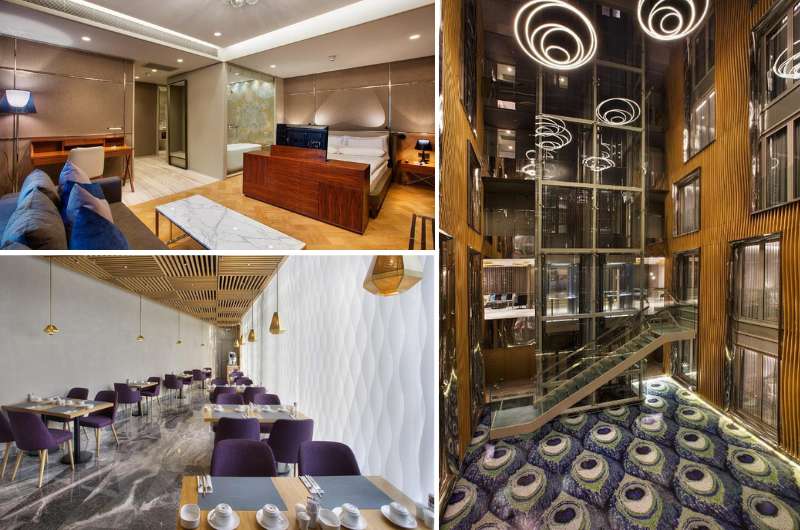
Very cool interiors and bathrooms you can (but don’t have to) see into @ Fer Hotel
Hotel tip: Fer Hotel is a 4-star hotel with some very cool interiors, and it’s just steps away from Cağaloğlu Hamam. Just look at that atrium! It’s one of the hotels we recommend in our guide to the best areas to stay in in Istanbul. Check it out.
If you never want to step foot in a taxi, you can just stay at Fer and walk everywhere—it’s a 5-minute walk to Sultanahmet Square and Hagia Sophia and 15 minutes from Topkapi Palace.
This hotel gives you a boutique hotel environment with all modern amenities including coffee machine, nice fluffy robes and spacious bathrooms that you can see into (there are blinds that can cover the glass dividers—to each their own).
7. Istanbul’s Hippodrome with obelisks and Serpent Column aka Sultanahmet Square
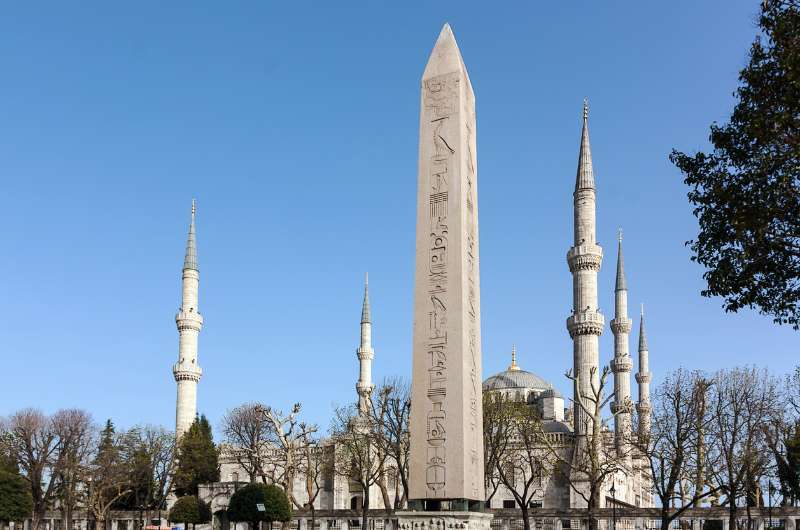
Istanbul’s Hippodrome with Theodosius’ Obelisk and the Blue Mosque in the background
I expected a lot from the Hippodrome, like more prominent Byzantine monuments, or maybe more information. It was still good enough, but it wasn’t what I was hoping for.
There isn’t much left of what used to be Istanbul’s Hippodrome, a public sporting arena from the last centuries BCE. Imagine chariot races, public executions and parades being watched by Constantinopolitans from the bleachers on one end—marble ones for the VIPs, wooden ones for common folk.
It’s now synonymous with Sultanahmet Square, which is right next to the Blue Mosque. The views of the Blue Mosque and Hagia Sophia are wow!
What’s left of the Istanbul Hippodrome?
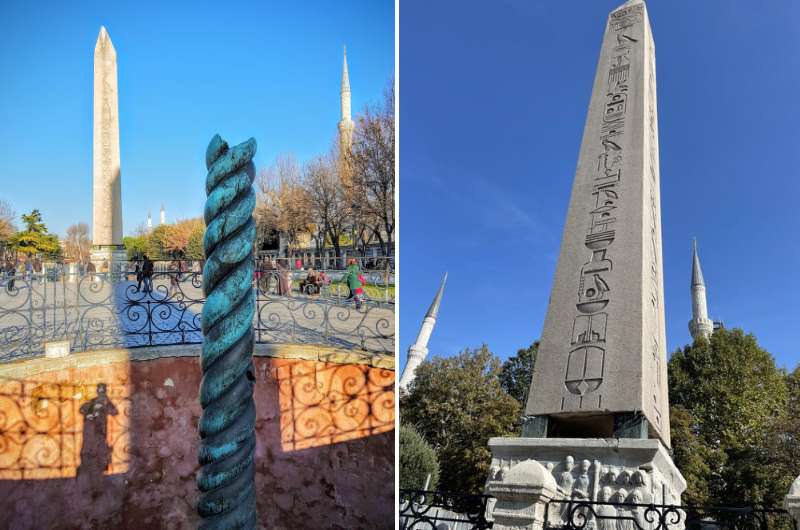
The bottom leftover part of the Serpent Column and the top leftover part of the Obelisk of Theodosius on Istanbul’s Hippodrome
There are a few leftover remnants from the Hippodrome’s era of glory. The Serpent Column was moved to the center of Istanbul’s Hippodrome from Delphi after the Greek victory in the Persian War in the 5th century BCE, though the three serpent heads never made it. You can see just the bottom 2/3 or the original Serpent Column. Some parts of the serpent heads are displayed the Archeology Museum (see the next item on this list).
The pink granite Obelisk of Theodosius was brought to Istanbul’s Hippodrome by Theodosius the Great all the way from Egypt in year 390. In order for it to make the trip, they had to chop it up into three parts. Only the top section survived until today, but at least it stands on the original marble pedestal.
The surface of the Walled Obelisk was built to mirror the Theodosius Obelisk and used to be decorated with gilded bronze plaques, but those were looted and melted down by the Fourth Crusaders at the beginning of the 13th century.
8. Istanbul’s Archeological Museums: a 3 in 1 with lots of sarcophagi
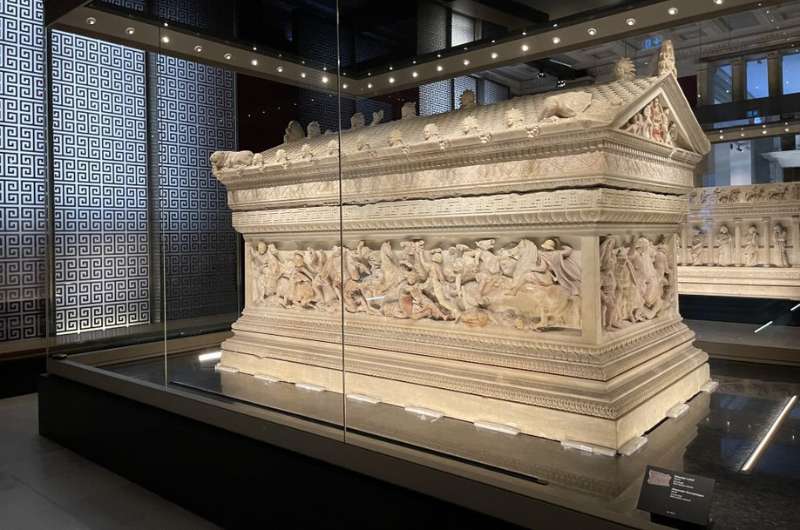
Alexander the Great Sarcophagus that doesn’t contain Alexander the Great
Another museum that was just ok compared to the world’s top museums (like the museums in Belgium), but I still think you should see it, if only for the large sarcophagi display. It is pretty modern and feels fresh and new, although dark.
I personally thought there were a ton of interesting displays, like the section dedicated to Troy or the sheer number of cultural artifacts. I just love me some history! (This feels like an appropriate place to plug the epic Museo Larco in Lima that describes ancient Peruvian civilizations. If you’re ever in that part of the world, make sure to visit it!)
There are some amazingly carved sarcophagi that were brought over from Lebanon, previously thought to hold the remains of Alexander the Great. Instead, Abdalonymus, a king of Sidon, is probably the one in there.
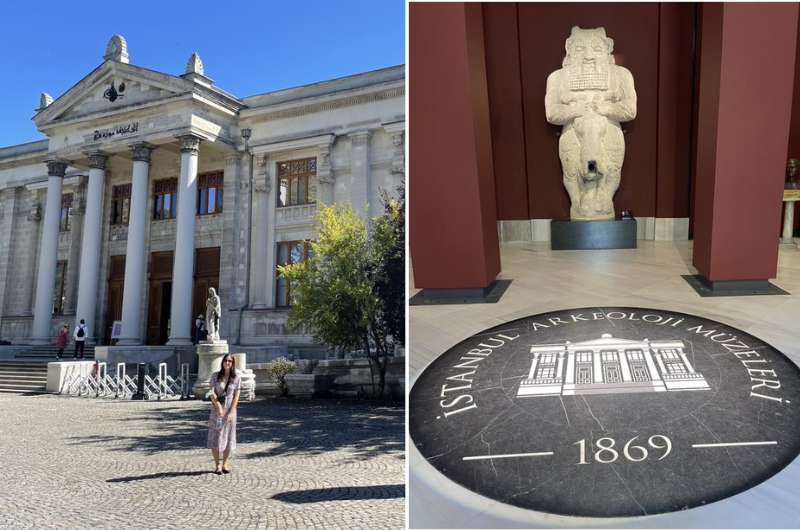
Istanbul’s Archeological Museum
Definitely pay the extra fee for the audio guide, signage isn’t great. The audio guide isn’t great either, but together with the spotty English descriptions on the signs you get a good amount of information overall.
The Archeology Museum is just one part of the “Istanbul Archaeology Museums”, which also includes the Museum of the Ancient Orient and the Museum of Islamic Art. They can all be visited on one ticket that costs TL 100 (USD 5.50).
It is considered the first museum of Turkey and was thought up by Ottoman Sultan Abdülaziz in 1869. He was so impressed by similar museums in London, Paris and Vienna that he wanted Turkey to have one of its own, too.
The line to get tickets can take 30 minutes. Tickets can’t be bought online.
You will take 2.5 hours if you go to all three museums and you move quickly.
The Archeology Museum is close to Topkapi Palace and the Museum of History of Science and Technology in Islam in the Eminönü district.
- Archeological Museums, Cankurtaran, Fatih
- Open daily 9 am–8 pm from April to October, until 6:30 pm in other months (ticket office 30 mins to an hour before closing time)
- Tickets cost TL 100.
9. Museum of Turkish and Islamic Art
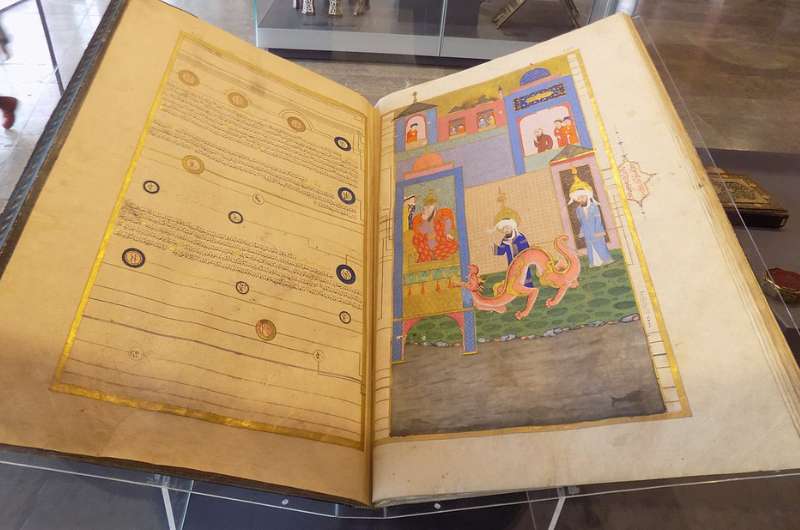
An exhibit at the Museum of Turkish and Islamic Art in Istanbul
Wanna see some old rugs? The Museum of Turkish and Islamic Art will give you lots of those, plus ancient texts, glass, ceramics and more.
I’m trying to be funny here but the carpets are actually interesting, as are some very old versions of the Quran and what just might be strands of prophet Mohammad’s beard. Takes me back to how strange it was staring at the Turin Shroud in Italy. You know, the one that is fake and sucks anyway?
The Museum of Turkish and Islamic Art is the perfect place if you want a snapshot of the old Turkish era. My favorite was the large ethnography hall that shows life in during the Ottoman Empire in the 19th century.
That said, I thought the museum was good when we visited it on our first day in Istanbul. If we went there on the third day, I would’ve probably not been so enthusiastic about it. So go on your first day if you don’t want to risk being underwhelmed.
It is located right next to Istanbul’s Hippodrome, the Blue Mosque and Hagia Sophia.
Get an audio guide, it’s good quality.
A visit to the Museum of Turkish and Islamic Art will take you about 1.5 hours.
- Museum of Turkish and Islamic Art, Binbirdirek, Atmeydanı Cd. No:12, Fatih
- Open daily 9 am–7:30 pm from April to October, until 6:30 pm in other months (ticket office closes 1 hour before closing time)
- Tickets are TL 60 without audio guide, TL 100 with audio guide.
10. Blue Mosque
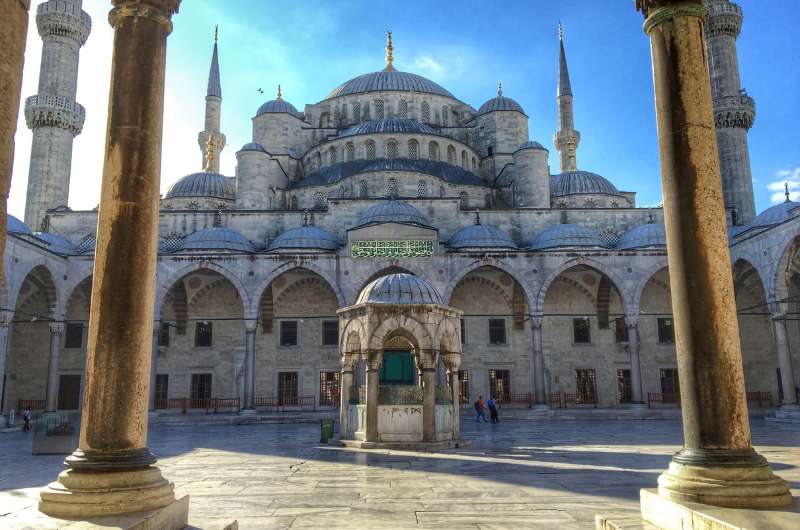
The Blue Mosque, officially Sultan Ahmet Mosque
The Blue Mosque’s official name is Sultan Ahmet Mosque, and it lies right next to Sultanahmet Square and Sultan Ahmet Park, which contains Sultan Ahmet’s tomb. A very young Sultan Ahmet had this mosque built in 1609 (finished in 1616).
Who was Sultan Ahmet?
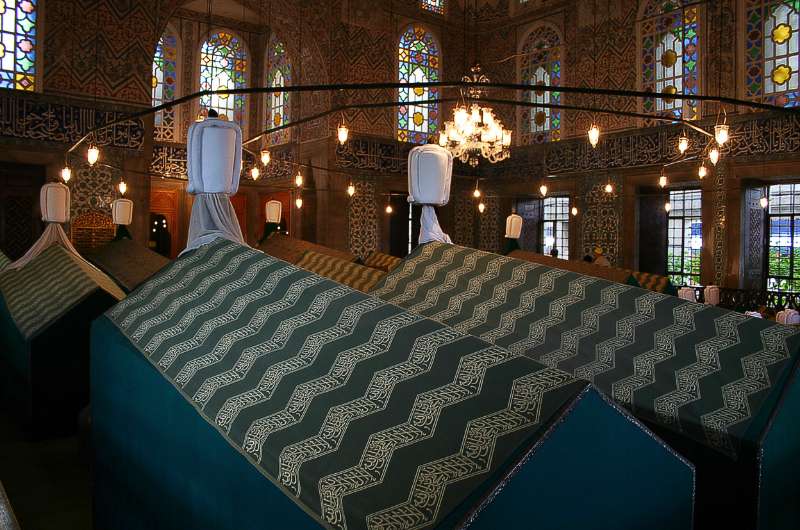
The inside of the Sultan Ahmet Tomb
Ahmed I was the Ottoman Empire’s 14th sultan in the beginning of the 17th century. He was only 14 years old when he became sultan, and his reign only lasted 14 years before he dies of typhus. He still managed to acquire two concubines, which whom he brought 14 children into this world. Three of them became future sultans, five of them were murdered—not everything in the Ottoman Empire was full of glitz and glamor.
Sultan Ahmet was the first one to break the tradition of the new sultan murdering his brothers (to protect his own status). This was a smart move, considering how young he died. Had he not had a brother to take over after him, the dynasty would’ve ended when he died. One of his sons though, once he took over, had no problem killing off most of his brothers.
The fact that he was so young didn’t keep him from being a good ruler, which I say is impressive. He had a good education and established some important land administration laws. He did lose Georgia and Azerbaijan to Persia and sign a very unpopular peace treaty with the Habsburgs, but you win some, you lose some.
What is the Blue Mosque known for?
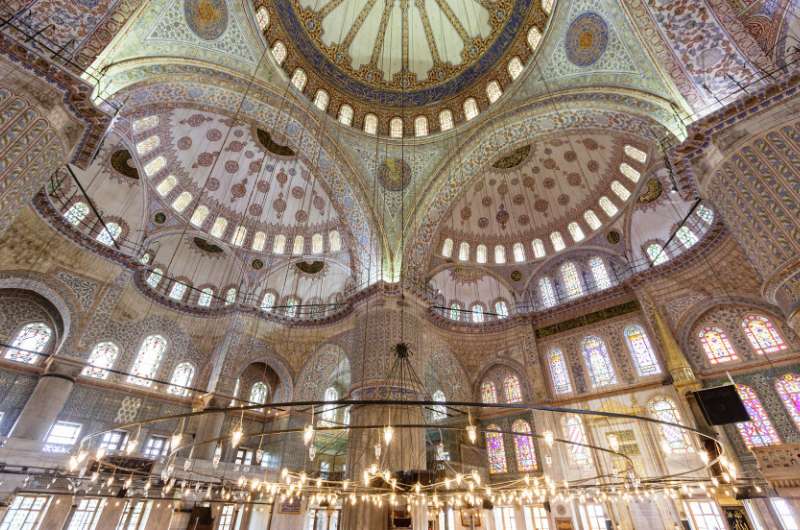
So many tiles!
You’ll notice during your Blue Mosque visit that it has 6 minarets—two more than it is supposed to have based on tradition (remember, it was 4 for sultans, 2 for princes and princesses, 1 for all others).
Legend has it that this comes down to a silly little misunderstanding—the sultan ordered the mosque to have altın minare (golden minarets), but the architect understood altı minaret, which means six minarets. I honestly doubt the architect wouldn’t have at least questioned that request if he heard wrong, but it’s a nice story.
At the time, the mosque in Mecca was the only mosque with 6 minarets, so you can see how the sultan might’ve rubbed a few million people the wrong way with his new megalomaniac mosque with 6 minarets. The solution was simple—Ahmed I. ordered that one more minaret get built at Mecca’s mosque. There.
Still, the Blue Mosque is incredibly impressive, with massive domes and columns and a large courtyard.
To understand why it’s called the Blue Mosque, you have to go inside. The dozens of thousands of blueish tiles will give you your answer.
A lot of its beauty is on the super high ceilings, which are hand-decorated with pencil work that matches the tilework of the walls. Be prepared to have a sore neck from looking up all the time. The mosaics are crazy, decorating this thing must’ve been such a pain in the ass. But thanks, historic builders! You did a fantastic job! – Future tourists
Blue Mosque visit: dress code and ticket price
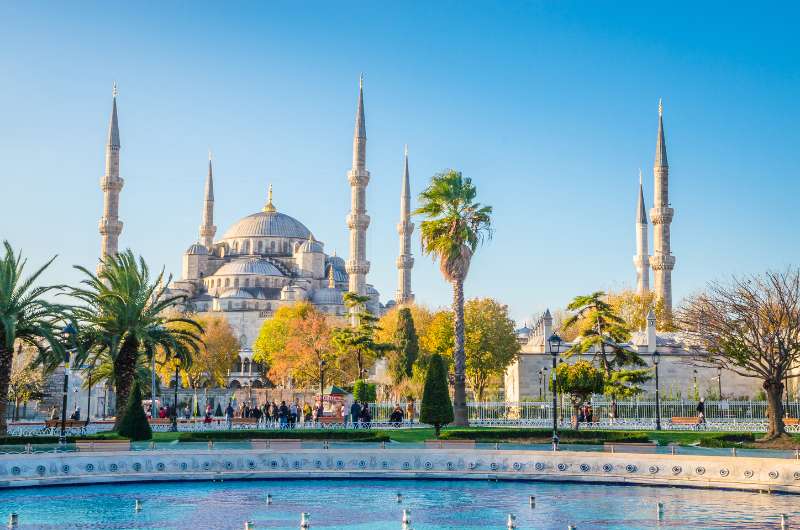
Even just seeing the Blue Mosque from the outside is pretty spectacular
Just kidding, there’s no ticket price. Entry to all mosques is free.
You enter through the west entrance (from Sultanahmet Square). You’ll probably stand in line a little bit, take your shoes off, put them in the provided plastic bag (to carry in with you), and head in.
The dress code at Blue Mosque is the same as most other mosques: shoes off, head scarves for the ladies, and covered knees and upper arms for everyone.
There are wraps available at the entrance in case you didn’t dress appropriately (for men and women). Women have to take much more care than men about what they are wearing, you really need to be covered from head to toe. Don’t even try going in in jeans.
Head scarves are available at the entrance too, all free of charge. Or all around Istanbul for a fee obviously.
What time can you visit the Blue Mosque?
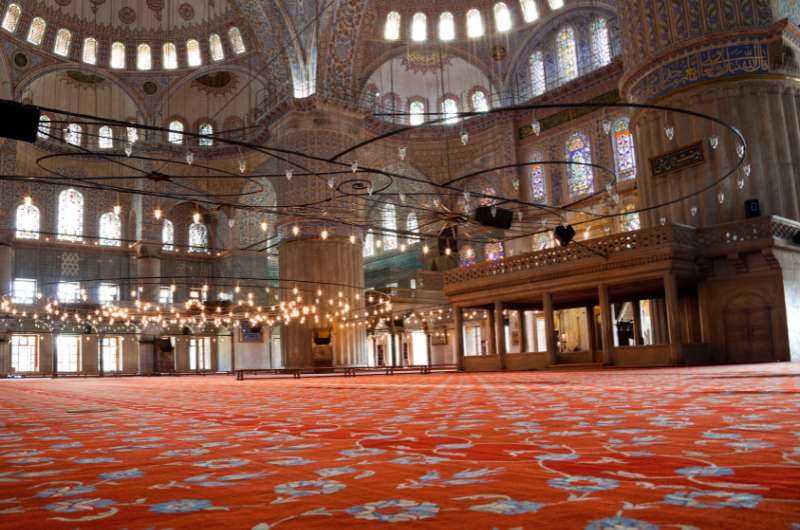
The interior of the Blue Mosque
If you are a Muslim, go ahead and go in at 3 am if you want, see if I care. You get to see the Blue Mosque 24 hours a day. Congratulations.
For non-Muslims, the Blue Mosque is open daily from 9 am and 6 pm. It is closed for about 1 to 1.5 hrs during and before each prayer (for cleaning). These come five times a day, and you’ll know this because you’ll be woken up at sunrise everyday by the call to prayer blasting from the minarets all over the city.
The prayer time that will most affect your visit is the one around noon, you can check the exact prayer times here (they change based on the sun’s movement), and then the one in the late afternoon that happens around closing time.
On Fridays, the Blue Mosque is closed in the morning until after midday prayer, so it only opens around 2:30 pm for visitors. Friday is the day that all mosques are more crowded, so avoid this day if you can.
- Blue Mosque, Sultan Ahmet, Atmeydanı Cd. No:7, Fatih
- Open daily 9 am to an hour before dusk (closed during prayer times), Fridays from 2:30 pm
- Free entry
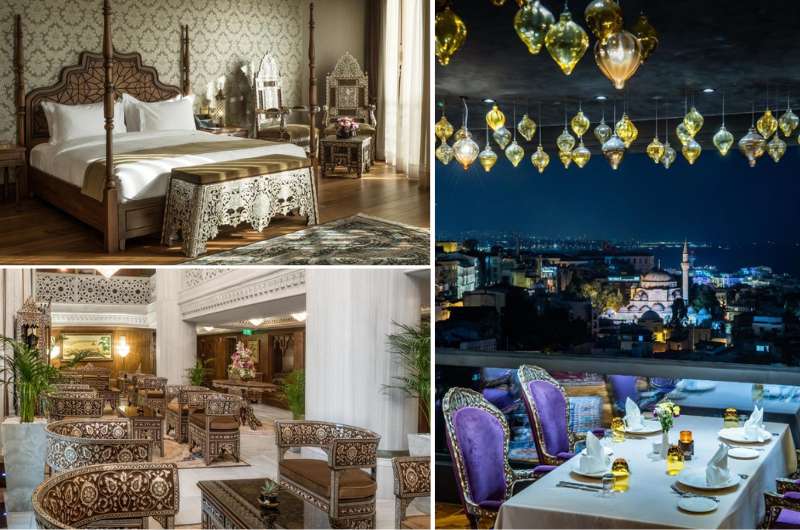
Livin’ like a sultan @ AJWA Sultanahmet
Hotel tip: The AJWA Sultanahmet is a new 5-star hotel from 2017 that gives you luxurious Ottoman style complete with hand-made carpets, hand-painted tiles, exquisite bedding, and an overall wow factor. The common areas with art by the best Turkish artists.
This is how you do traditional and intricate design and make it modern and not stuffy or over-the-top.
AJWA is located in the southwest of Sultanahmet, meaning close to the Blue Mosque but a little further from Topkapi Palace.
A restaurant on the 8th floor provides great food and views. There’s also a spa and indoor pool.
11. Little Hagia Sophia
Just like big Hagia Sophia, this church was converted into a mosque from a church. But not just any church—it was from one of the most important structures of the Byzantine period, the Church of Saints Sergius and Bacchus, originally built in the 530s.
Some say that big Hagia Sophia was modeled after it or that the little Hagia Sophia served as a sort of practice before they built Hagia Sophia, but a quick Google search tells you that probably isn’t true. Instead, another church, Church of St. Polyeuctus, seems to have influenced Hagia Sophia the most.
You can see how the big and little Hagia Sophia’s are similar from the outside because of its color. That’s about it though.
Entry to Little Hagia Sophia is free of charge as it is a working mosque. Opening hours for visitors are daily from 10 am–6 pm except for prayer times. Remember to cover up (shoulder and knees are a no no, shoes have to come off, ladies’ hair needs to be covered).
Little Hagia Sophia is located close to the Blue Mosque, but closer to the coast.
- Little Hagia Sophia, Küçük Ayasofya Mahallesi, Küçük Ayasofya Camii Sokagi No:20, Fatih
- Open daily 10 am–6 pm except for prayer times
- Free entry
12. Great Palace Mosaics Museum: see the largest ancient mosaic in the world
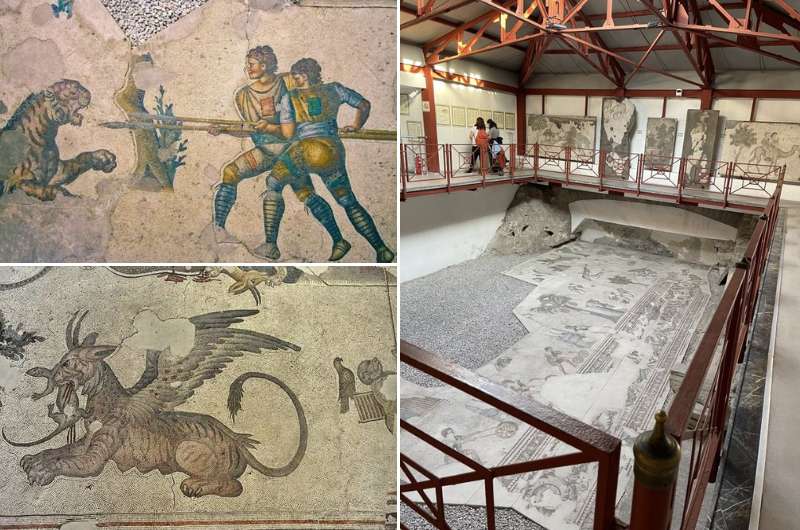
Lots of death, dying and killing depicted in the Mosaics Museum. Just scenes of everyday life way back when.
If you have 20 minutes and USD 6 to spare when you’re in the Blue Mosque area, check out the Istanbul Mosaics Museum.
It’s a relatively small museum of mosaics that were found during the excavation of the Eastern Roman Grand Palace in 1935. The mosaics date back to year 450–550.
The individual tiles are only about 5 mm small, which means it had to be so incredibly annoying putting these pictures together! There are 40.000 teeny tiny tiles on each m2!
The mosaics at the Mosaics Museum depict everyday life, which was apparently very drastic. Lots of killing and hunting. Not sure how “everyday” the dragon was back then, but there are those, too. Of course, there are many more wholesome scenes, like “man with jug” or “bear eating apples”.
This was a pleasant museum, I can’t say anything bad about it. So take the half hour out of your day to see the largest ancient mosaic in the world. Was that on your bucket list? Quick, put it on there so you can cross it off after this visit!
- Great Palace Mosaics Museum, Sultanahmet Mahallesi Kabasakal Cad. Arasta Çarşısı Sok. No. 53, Fatih
- Open daily 9 am–7 pm (last entry at 6:30 pm) during April to October. It closes at 6:30 pm in other months.
- Tickets cost TL 60.
13. Maiden’s Tower: just boat past and you’re good
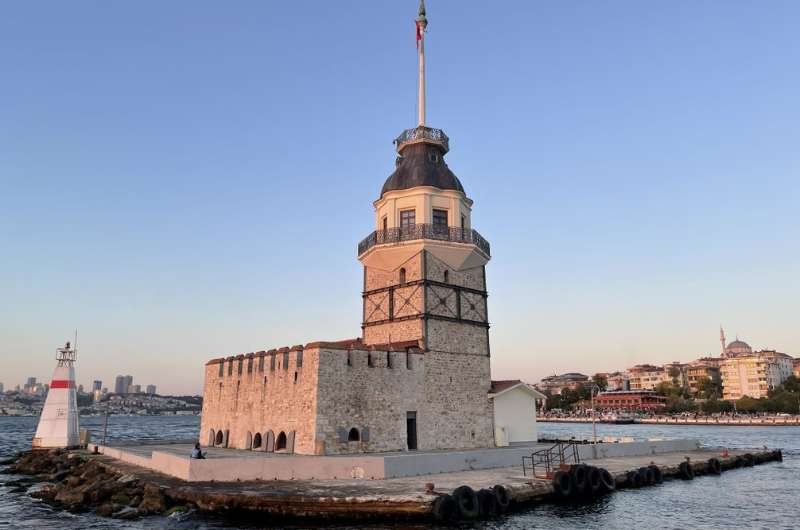
Maiden Tower on the Bosphorus as seen from yacht tour in Istanbul
Istanbul’s Maiden Tower (Kiz Kulesi) is on a little man-made islet on the Bosphorus off the Asian side of Istanbul. We, just like most other tourists, only saw it from the outside while passing by it on a boat tour.
It is currently getting restored and the restaurant that was once there is closed down.
All Istanbul boat tours go past it, but if you want something a little extra, take a yacht tour. Read more about the one we took in our article about the top things to do in Istanbul.
It seemed sufficient to me to see the thing from the yacht, especially during sunset, though it had served as a restaurant until it closed down for restoration works in 2021. When restoration works finish, the restaurant is not set to return and it will simply be a historic monument and tourist site.
In the past, the Maiden Tower has also served as a traffic control tower, a lighthouse, and a quarantine hospital during the plague.
There are several legends that explain the towers name, but all have to do with a girl that gets put in the tower for protection from love or death. One way or another, there was probably a woman that lived in the tower until her tragic death or some sort.
Is Istanbul’s Maiden Tower closed in 2022?
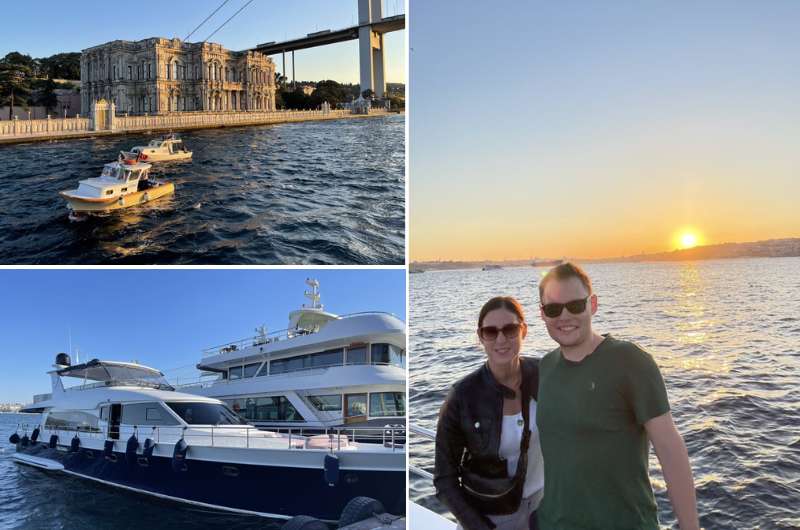
A few photos from our yacht tour in Istanbul. Read our article about the top things to do in Istanbul for more details.
As of August 2022, restoration works are still ongoing at the Maiden Tower. You can check the status of the works on this website. Google Translate will help with the Turkish.
The restaurant that was once inside will not be returning. Maiden Tower Istanbul will stay as a historic monument and tourist site. The views from it will be lovely, I’m sure!
14. Dolmabahçe Palace
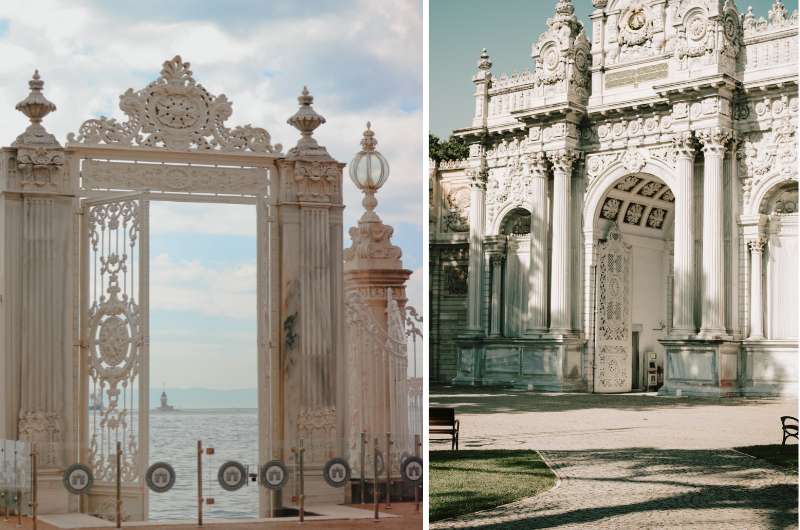
Do you think they did enough to prove the Ottoman Empire was not struggling?
The palace was used by six sultans from the year 1856, then as a presidential palace, and then, in 1984, was opened as a museum with original furnishings. When it was built, it was intentionally made extravagant and European in style so as to impress the world and cover up the fact that the Ottoman Empire wasn’t doing so well.
Dolmabahçe Palace is the biggest palace in Turkey. It sits right by the Bosphorus and includes several buildings other than the main building, like the aviary, the glass factory and the stables. Everything is big and fancy and wonderful.
What can I say about the Dolmabahçe Palace… I want to say it is excessive in everything from size to the truckloads of gold and crystals used to decorate it, but then again, it’s what the sultans wanted, and what their image needed.
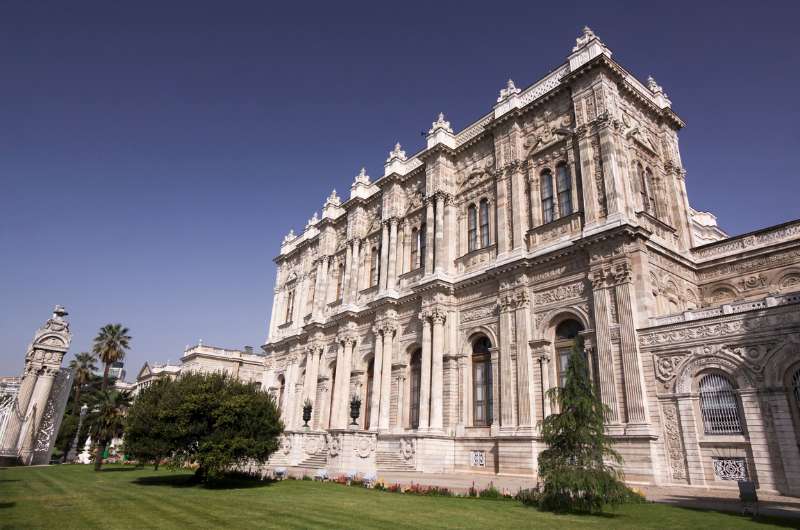
One ego-boosting palace, coming right up!
It’s also why they fell out of love with Topkapi Palace, because the luxury that Dolmabahçe offered was second to none.
Inside, the main palace building has three sections—the Administrative Section, the Grand Ceremonial Hall, and the Harem aka Private Section. There are also 68 toilets and 6 hammams, so the former residents could keep clean, inside and out.
Or, maybe the other rulers of the world at the time would be even more impressed by a huge number of toilets, I have no idea.
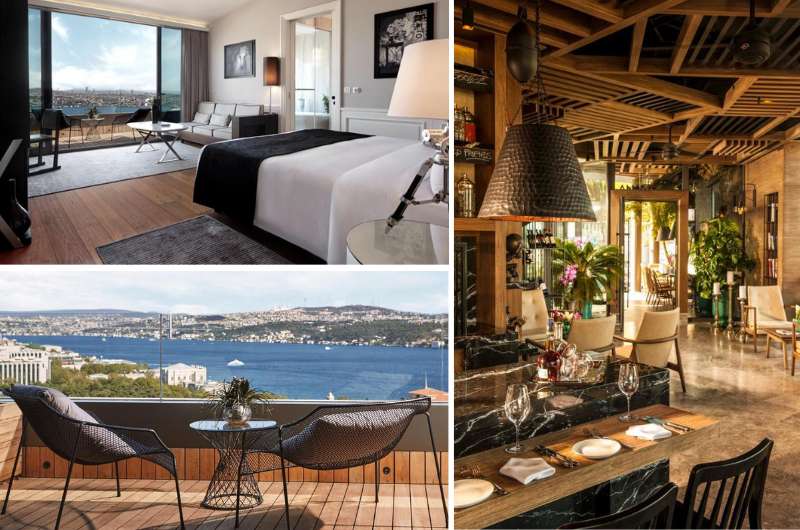
Views for days @ Gezi Hotel Bosphorus, a Member of Design Hotels
The Dolmabahce Palace is located north of everything else of interest in Istanbul, so the closest you would stay in a hotel would probably be in the Taksim area. We’re not a fan of Taksim, but there is a hotel there that we think is worth a look if you are considering staying there: Gezi Hotel Bosphorus, a Member of Design Hotels has pretty darn great views—from the restaurant and bar and from the rooms.
Read our opinion on where best to stay in Istanbul in this article. We have neighborhood descriptions and hotel tips.
- Dolmabahçe Palace, Vişnezade, Dolmabahçe Cd.,
- Open daily except for Mondays from 9 am–6 pm. Closed on Mondays.
- Tickets cost TL 300. Istanbul Museum Pass is not valid here.
15. Galata Tower
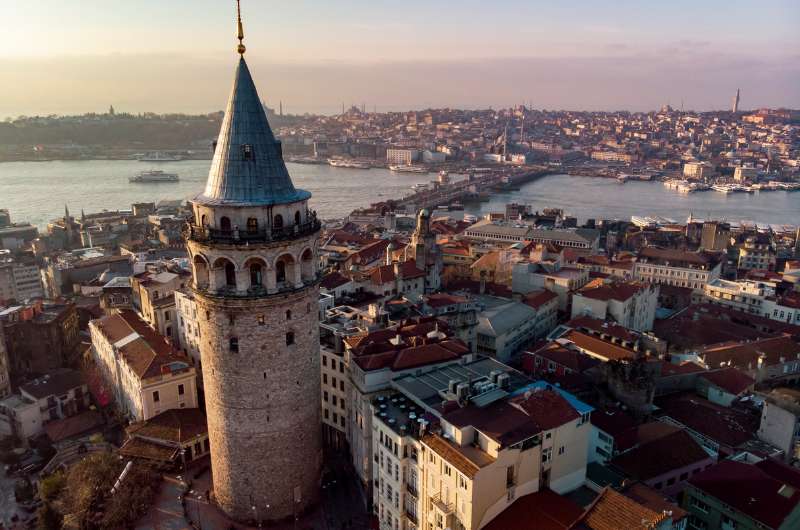
Hey tower! Where’s your castle?!
The Galata Tower is one of the oldest towers in the world and one of the city’s top tourist sights.
It used to be called the Galata Fire Tower since it was used to look out for fires. Ironically, the iconic cone-shaped roof was added during repairs after—wait for it—a fire that damaged the tower! I guess someone was sleeping on the job. That was in 1831.
Interestingly, Suleiman the Magnificent used it as a prison during his rule.
Is the Galata Tower worth visiting?
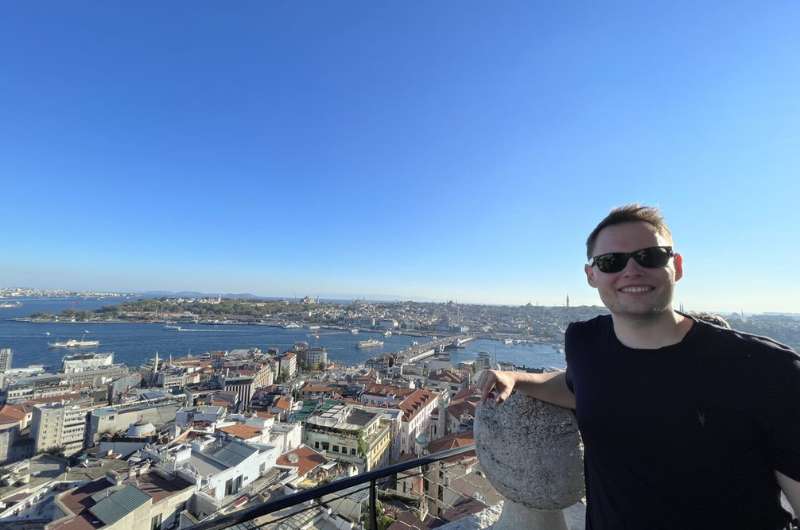
The view from the top of the Galata Tower. Don’t be mistaken, I’m smiling because I’m not standing in line for tickets anymore.
Today, the Galata Tower is a museum that you can, but don’t have to, visit. I’ll explain why I think Galata Tower is borderline not worth visiting:
Galata Tower is in Beyoglu (which has rooftop bars that you shouldn’t miss, so you will be in the area at some point), so if you just want to pop in during the day, the distance could be a deal breaker. It’s located across the Golden Horn, far away from everything else you’ll want to visit in Istanbul.
There are crazy lines to get into Galata Tower. It seems everyone that is visiting Istanbul is at Galata Tower at the same time. Annoying. And once you get your ticket, you stand in another line to get in. Annoying2.
It’s expensive for what it is: TL 175 (USD 10) for a view from a tower. Considering most of Istanbul’s highlights are on a hill, you’ll get view after view everywhere you go. No need for a Galata Tower view really.
Inside, you can walk or take the elevator up the 9 floors, look at the views from the top, and spend a little time at the small museum exhibitions, walking down the stairs. Taller people have to hunch over in order to fit in the stairwell. Nothing to do for more than 20 minutes.
By all means, take a look at the Galata Tower from the outside when you’re in the neighborhood (before you head to the bars), but don’t feel bad if you don’t get a chance to go in.
- Galata Tower, Bereketzade, Galata Kulesi, Beyoğlu
- Open daily 8:30 am–11 pm (ticket counter closes at 8:30 pm) during April to end of October. It closes at midnight in other months (ticket counter closes at 11 pm).
- Tickets cost TL 175.
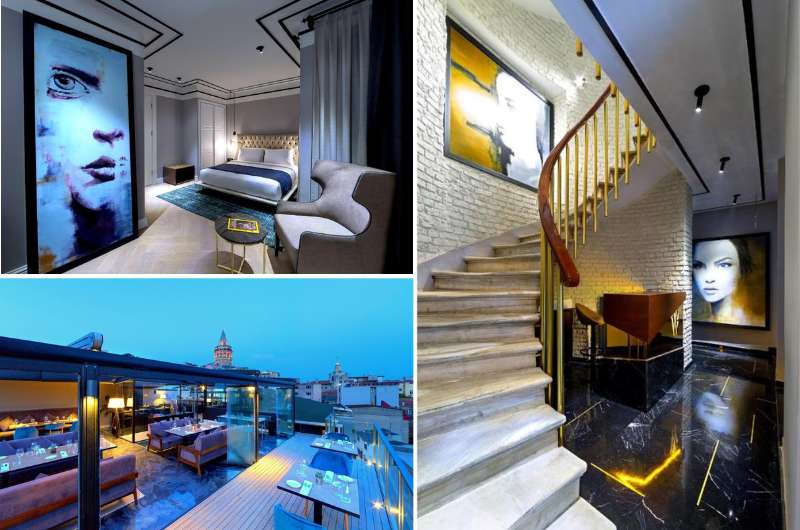
Lots of art and their very own rooftop bar @ Walton Hotels Galata
Hotel tip: You can not visit the Galata Tower and still get great views of it, like from the 4-star Walton Hotels Galata. With spacious, contemporary rooms, Walton Hotel will provide a great base for your exploration of Istanbul.
The rooftop restaurant and bar has view of the Galata Tower, the Golden Horn, and you can see as far as Hagia Sophia in Sultanahmet. Breakfast is served there as well.
Staff in this hotel are especially friendly and nothing is a problem, you’ll feel like the most honored guest at all times. And that feels nice, you know?
16. Grand Bazaar—a big DON’T VISIT in Istanbul
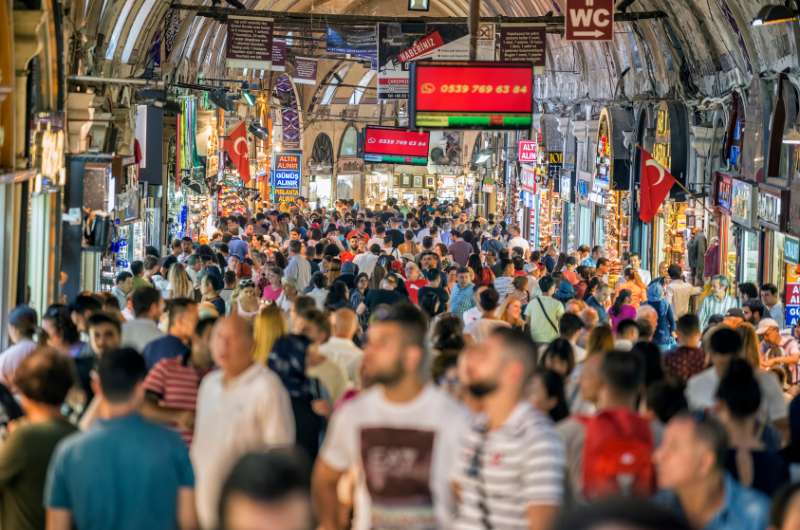
Not the Istanbul you want to experience. Crowds, crap, and crazy prices.
Last and certainly least, is Istanbul’s biggest tourist trap, the Grand Bazaar. You can say it's colorful and lively all you want, but the Grand Bazaar to me was uninteresting, boring, and something I’d happily live my life without ever stepping foot in.
And for what? It’s not like you’ll feel like a local, it’s full of huge crowds of tourists. Everyone sells the same things and they cost more than twice as much as in other places, sellers are pushy and not particularly friendly.
What’s a better alternative to the Grand Bazaar?
If you must, a more acceptable alternative to the Grand Bazaar is the Spice Bazaar aka the Egyptian Bazaar. Nicer sellers, smaller crowds (and smaller overall), lower prices (though still a lot of them overpriced—you still need to negotiate to under 50%), lots of spice and tea, but also regular souvenirs.
I recommend getting a Turkish tea and some sweets at one of the sellers in the lanes outside the market and watch life go by for a little while. Read about food and drinks in Turkey here to see what I mean by sweets.
- Grand Bazaar, Beyazıt, Kalpakçılar Cd. No:22, Fatih
- Open daily 10 am–6 pm
- Free entry
Tip: Another thing you don’t need to try in Istanbul? Shoeshines.
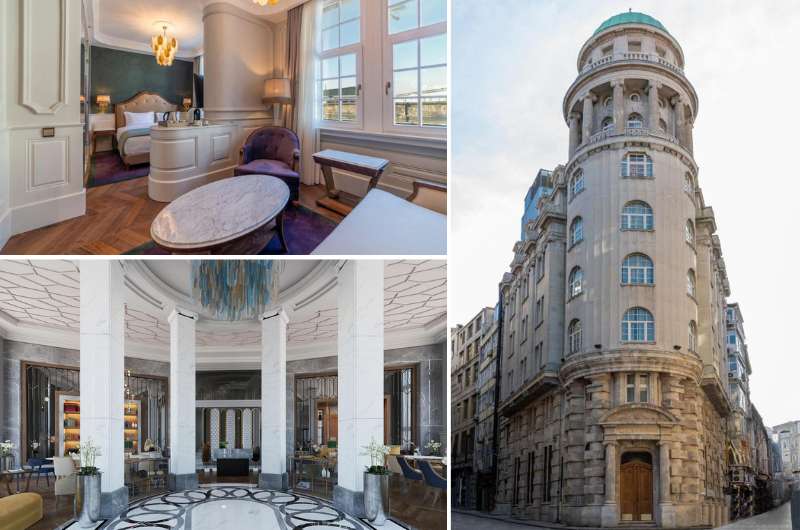
Classy vibes @ Orientbank Hotel Istanbul, Autograph Collection
Hotel tip: As far as the best places to stay in Istanbul, Sultanahmet is our favorite, but Eminönü, which is where both the Grand Bazaar and Spice Bazaar are located, also isn’t terrible.
The Orientbank Hotel Istanbul, Autograph Collection in Eminönü is praised in reviews time and time again for superb service, with staff going above and beyond and tending to needs and wants guests didn’t even know they had.
This hotel used to be a bank, so rooms are cozy, which is code for small. Marble walls in the bathrooms and large-ish windows make up for the sometimes cramped space, as does the incredible breakfast buffet.
Close enough to the ferries to comfortably get you across to Beyoğlu, but far away enough from the noise to get a good night’s sleep.
This post may contain affiliate links. We earn a small commission if you make bookings through my links, at no additional cost to you. This helps us keep this blog free, thank you!


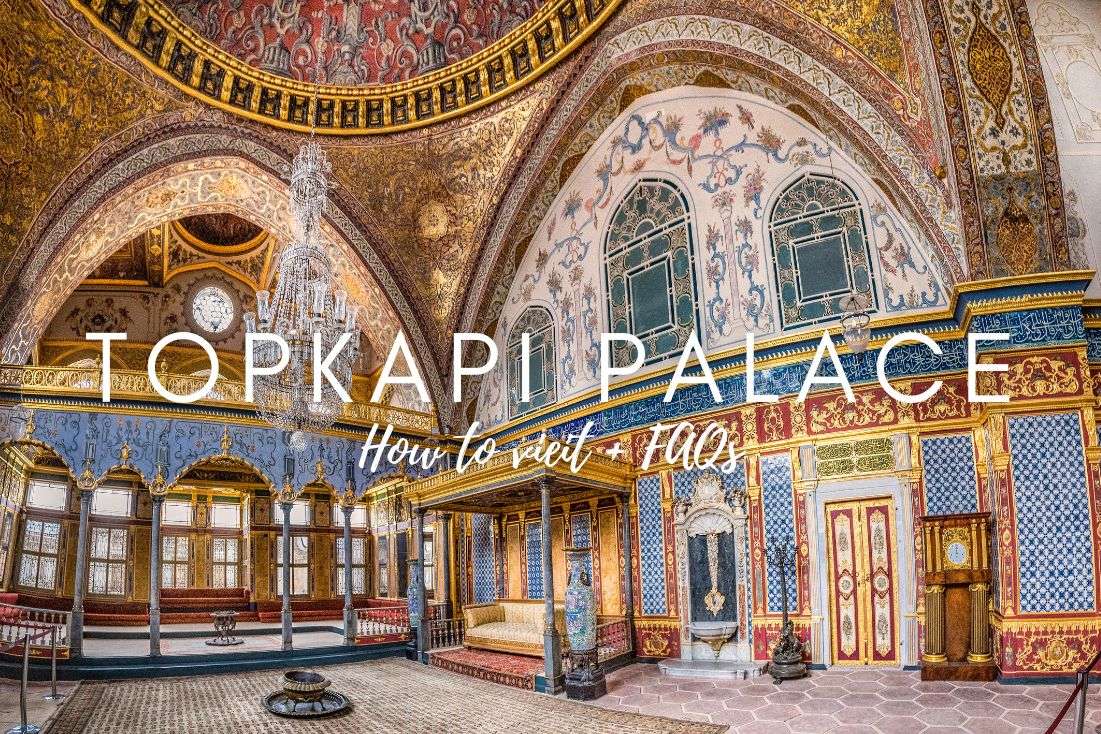
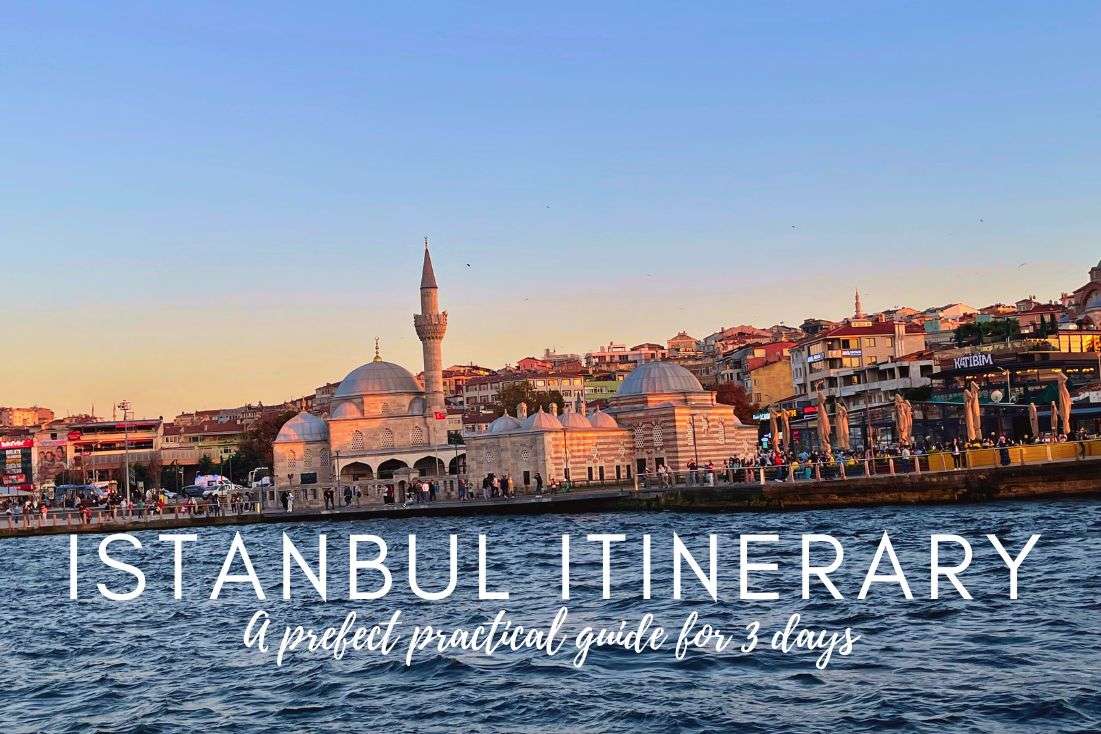






Comments | Thoughts? Give us a shout!